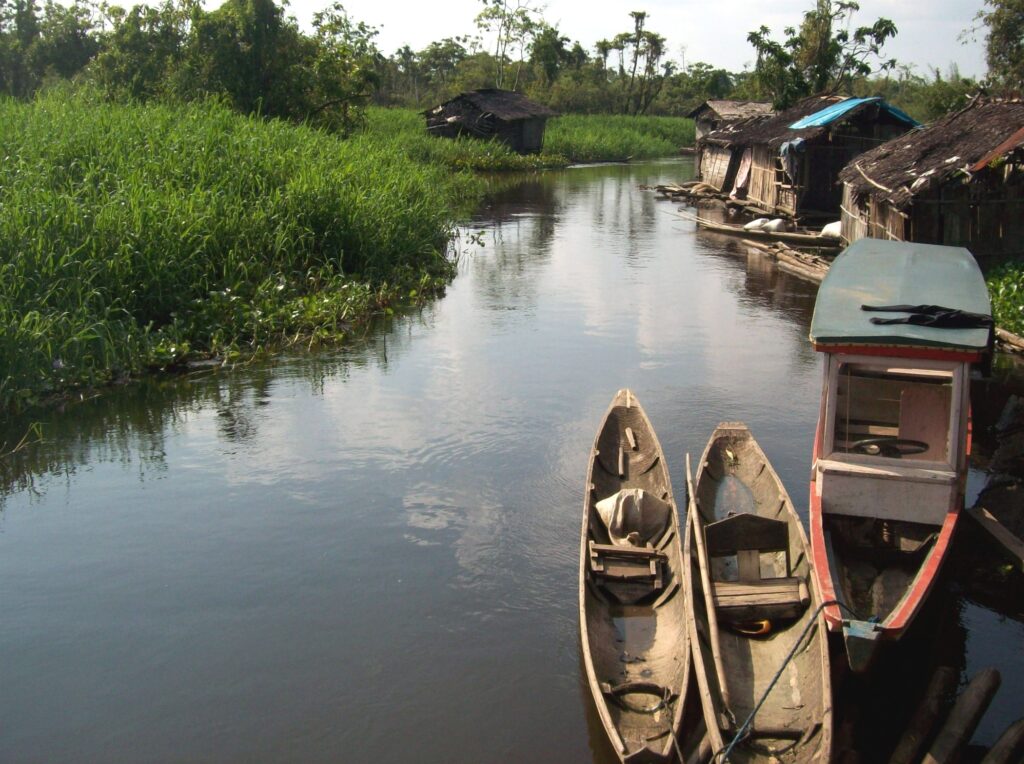Saving the world’s wetlands from disappearing
Text and Photos by Henrylito D. Tacio
This ecosystem comes in various names: bogs, swamps, bayous, marshes, billabongs, fens, vernal pools, lagoons, and other saturated fields and forests. However, it is classified under the general category of wetlands.
Paul A. Keddy, author of Wetland Ecology: Principles and Conservation, defines a wetland as “an ecosystem that arises when inundation by water produces soil dominated by anaerobic processes which, in turn, forces the biota, particularly rooted plants, to adapt to flooding.”
A patch of land that develops pools of water after a rainstorm would not be considered a “wetland,” even though the land is wet. Specifically, wetlands are characterized as having a water table that stands at or near the land surface for a long period each year to support aquatic plants.
In simpler terms, wetlands occur where water meets land. They include mangroves, peatlands and marshes, rivers and lakes, deltas, floodplains and flooded forests, rice-fields, and even coral reefs.
Part of Agusan Marsh (scanned by gmail)

Wetlands constitute only six to nine percent of the Earth’s surface (ranging from 5.3 to 12.8 million square kilometers). Despite their limited area, they play crucial roles by supplying fresh water, providing habitats, and contributing to the mitigation of climate change.
The Biodiversity Management Bureau (BMB) of the Department of Environment and Natural Resources (DENR) states the first basic function of wetlands is that they ensure freshwater for all people. “Wetlands provide us with drinking water,” it points out.
Wetlands also filter harmful waste from water. “Eighty percent of wastewater is discharged into the natural environment without any form of treatment,” says BMB. “The abundant plant life in wetlands absorbs waste, which helps purify water.”
Unknown to many, wetlands are nature’s shock absorbers. “Wetlands are a natural buffer during extreme weather. They store heavy rainfall during storms, which reduces flooding and delays the onset of droughts,” BMB states.
The wetlands are very important when it comes to biodiversity. “Wetlands are home to more than 100,000 freshwater species,” BMB says. “They are essential for many amphibians, reptiles and migratory birds.”
Wetlands also guarantee food supply. “Wetlands provide significant food products,” BMB says. The United Nations Environment Program (UNEP) says over 140,000 species, including 55% of all fish, rely on freshwater habitats for their survival. Freshwater species are essential to local ecosystems and provide sources of food and income to humans.
Wetlands may also be essential sources of renewable energy. A study which was published in the journal Annual Review of Environment and Resources stated that wetlands “contribute more to annually renewable ecosystem services than their small area implies.”
The role of wetlands when it comes to the problem of climate change also cannot be ignored, as they store carbon. A 2022 study published in Science indicates that wetlands are responsible for storing 20% of the planet’s organic ecosystem carbon. This significant carbon storage is attributed to their exceptional carbon sequestration rates and efficiency per unit area, which surpass those of both marine and forest ecosystems.
“Wetlands are carbon sinks that, when destroyed, can become a major source of greenhouse gas emissions,” wrote National Geographic’s Sarah Gibbens.
The mangrove forest of Siargao.

Despite being amongst the world’s most economically valuable ecosystems and essential regulators of the global climate, wetlands are disappearing three times faster than forests, according to the findings of the first-ever Global Wetland Outlook by the Ramsar Convention on Wetlands.
The Ramsar Convention is an intergovernmental treaty that provides the framework for national action and international cooperation for the conservation and wise use of wetlands and their resources.
“The Global Wetland Outlook is a wake-up call not only on the steep rate of loss of the world’s wetlands, but also on the critical services they provide. Without them, the global agenda on sustainable development will not be achieved,” said Martha Rojas Urrego, Secretary General of the Ramsar Convention.
Losses have been driven by megatrends such as climate change, population increase, urbanization, particularly of coastal zones and river deltas, and changing consumption patterns that have all fueled changes to land and water use and to agriculture.
The world’s remaining wetlands, covering an area greater than Greenland, are under threat due to water drainage, pollution, unsustainable use, invasive species, disrupted flows from dams and sediment dumping from deforestation and soil erosion upstream.
Over the past 200 years, according to UNEP, wetlands have been drained to make way for development, farming or other “productive” uses. “Depending on the amount of climate-related sea level rise, some 20 to 90 percent of current coastal wetlands could be gone by the end of the century,” UNEP warned.
To save the wetlands from disappearing, Ramsar sites – Wetlands of International Importance – are declared. These sites are recognized as being of significant value not only for the country or the countries in which they are located, but for humanity as a whole.
In the Philippines, there are ten wetlands of international importance. Luzon has five: Tubbataha Reefs Natural Park and Puerto Princesa Subterranean River National Park, both in Palawan; Las Piñas-Parañaque Wetland Park, Sasmuan Pampanga Coastal Wetlands, and Naujan Lake National Park in Oriental Mindoro.
The Visayas has only two sites: Negros Occidental Coastal Wetlands Conservation Area and Olango Island Wildlife Sanctuary in Cebu.
The remaining three are located in Mindanao: Agusan Marsh Wildlife Sanctuary, Sibugay Wetland Nature Reserve in Zamboanga Sibugay, Del Carmen Mangrove Reserve in Siargao Island.

